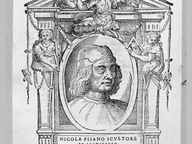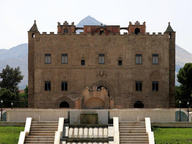The Green Pavilion
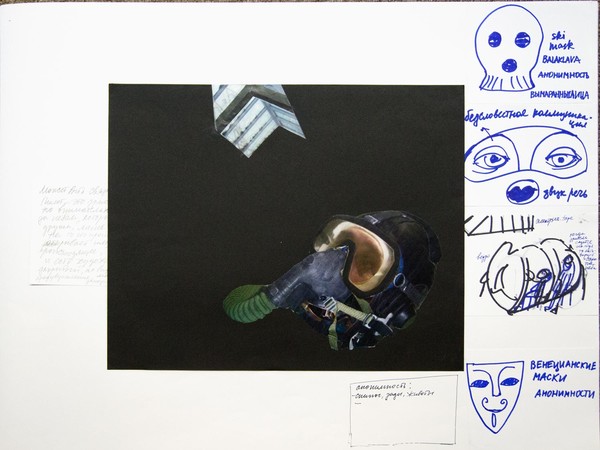
Irina Nakhova, Sketch for The Green Pavilion, 2015. Courtesy the Artist; Stella Art Foundation
From 09 Maggio 2015 to 22 Novembre 2015
Venice
Place: Biennale Giardini / Pav. Russia
Address: Giardini della Biennale
Responsibles: Margarita Tupitsyn
Organizers:
- Stella Kesaeva
The “Green Pavilion” by Irina Nakhova (Russian-American, b. 1955) is in dialogue with Ilya Kabakov’s “Red Pavilion,” built for the 45th Venice Biennale in 1993. In “The Red Pavilion” Kabakov demonstrated the importance of discourse of color for Soviet modernists and postmodernists, who transferred it from signifier to signified, or from formalism to socio-formalism. By building “The Red Pavillion” in the courtyard, Kabakov left the Russian Pavilion—the erected by Aleksei Shchusev, the architect of the Lenin Mausoleum—empty, thus creating a metaphor that embodied the non-institutional status of Moscow vanguard artists and their non-involvement in the culture industry. This gesture of de-interiorization also signified these artists' entry onto the international stage.
In “The Green Pavilion,” Nakhova, an artist who like Kabakov was associated with the Moscow conceptual circle, forsakes the course of alienation from the Russian Pavilion. On the contrary, she carries out its transformation by repainting the exterior in its original green, activating a [why a if it’s plural?] signifying mechanisms of color in each of the pavilion’s rooms. Inside, Nakhova unleashes the trans-painterly potential of color, demonstrating its ability to react to social and cultural transformations. These color-charged interactive environments hark back to the unique model of installation art that Nakhova conceived in the early 1980s as a reaction to the dire working conditions of “unsanctioned” artists in cramped and cluttered studios (with no chance of contact with audiences and critics). In a series of environments created in her apartment, and which became an iconic work in the history of Moscow conceptualism (under the general name, “Rooms”), Nakhova responded to the spatial limitations and audience deprivation that Soviet artists endured for decades. The hermetic interior of the “The Green Pavilion” generates a sense of physical relation to constructed spaces: they are at once hermetic and de-hermetized through color pressure and interactive intensity. Thus, if Kabakov’s “Red Pavilion” marked the end of the hermetic nature of the Moscow vanguard, Nakhova’s “Green Pavilion” resumes the debate about the very possibility of the de-interiorization of local visual cultures.
In “The Green Pavilion,” Nakhova, an artist who like Kabakov was associated with the Moscow conceptual circle, forsakes the course of alienation from the Russian Pavilion. On the contrary, she carries out its transformation by repainting the exterior in its original green, activating a [why a if it’s plural?] signifying mechanisms of color in each of the pavilion’s rooms. Inside, Nakhova unleashes the trans-painterly potential of color, demonstrating its ability to react to social and cultural transformations. These color-charged interactive environments hark back to the unique model of installation art that Nakhova conceived in the early 1980s as a reaction to the dire working conditions of “unsanctioned” artists in cramped and cluttered studios (with no chance of contact with audiences and critics). In a series of environments created in her apartment, and which became an iconic work in the history of Moscow conceptualism (under the general name, “Rooms”), Nakhova responded to the spatial limitations and audience deprivation that Soviet artists endured for decades. The hermetic interior of the “The Green Pavilion” generates a sense of physical relation to constructed spaces: they are at once hermetic and de-hermetized through color pressure and interactive intensity. Thus, if Kabakov’s “Red Pavilion” marked the end of the hermetic nature of the Moscow vanguard, Nakhova’s “Green Pavilion” resumes the debate about the very possibility of the de-interiorization of local visual cultures.
SCARICA IL COMUNICATO IN PDF
COMMENTI

-
 Dal 03 maggio 2024 al 31 agosto 2024
Como | Ex Chiesa di San Pietro in Atrio e Palazzo del Broletto
Dal 03 maggio 2024 al 31 agosto 2024
Como | Ex Chiesa di San Pietro in Atrio e Palazzo del Broletto
-
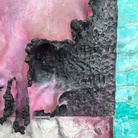 Dal 03 maggio 2024 al 14 luglio 2024
Pisa | Palazzo Blu
Dal 03 maggio 2024 al 14 luglio 2024
Pisa | Palazzo Blu
-
 Dal 04 maggio 2024 al 24 novembre 2024
Venezia | Spazio Vedova
Dal 04 maggio 2024 al 24 novembre 2024
Venezia | Spazio Vedova
-
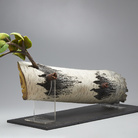 Dal 04 maggio 2024 al 26 maggio 2024
Torino | Palazzo Saluzzo Paesana
Dal 04 maggio 2024 al 26 maggio 2024
Torino | Palazzo Saluzzo Paesana
-
 Dal 23 aprile 2024 al 01 settembre 2024
Bergamo | Accademia Carrara
Dal 23 aprile 2024 al 01 settembre 2024
Bergamo | Accademia Carrara
-
 Dal 26 aprile 2024 al 09 giugno 2024
Reggio nell'Emilia | Sedi varie
Dal 26 aprile 2024 al 09 giugno 2024
Reggio nell'Emilia | Sedi varie

